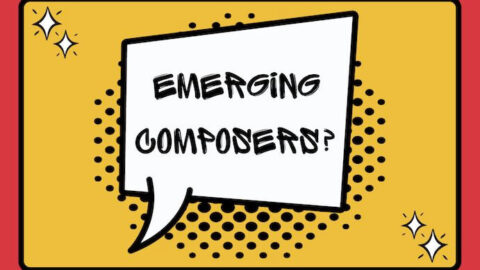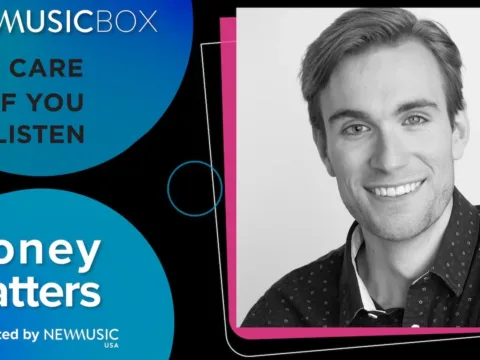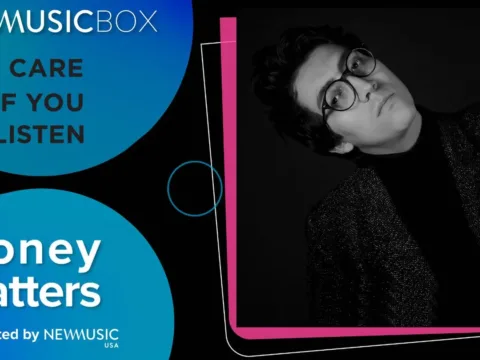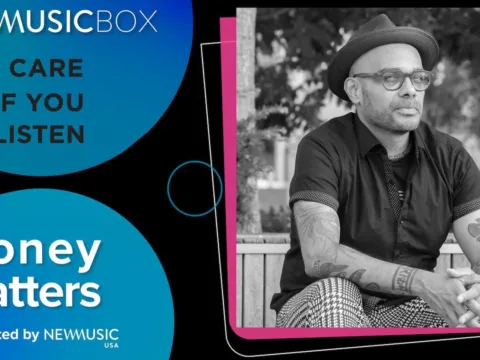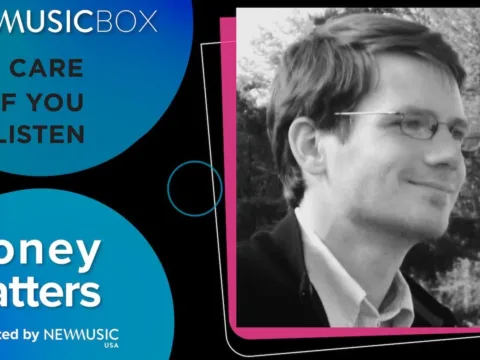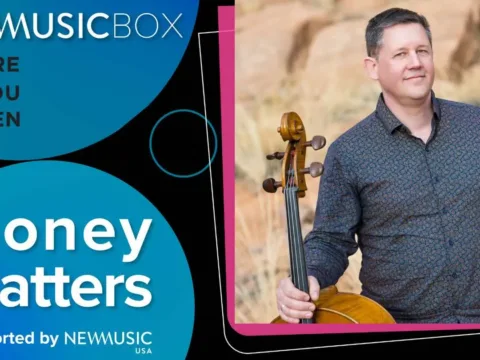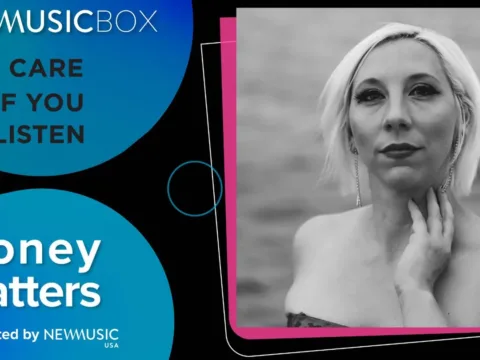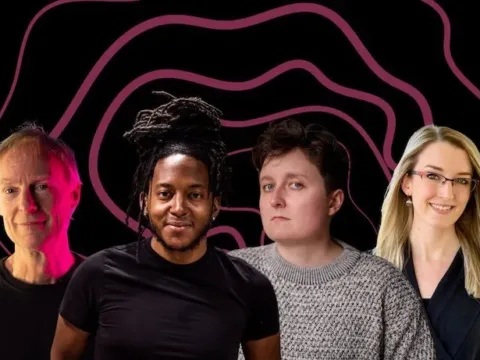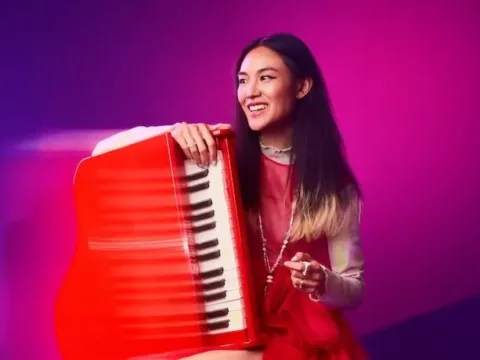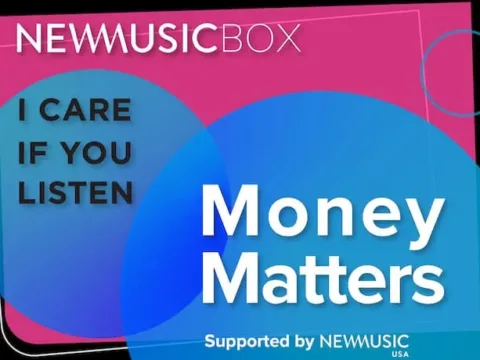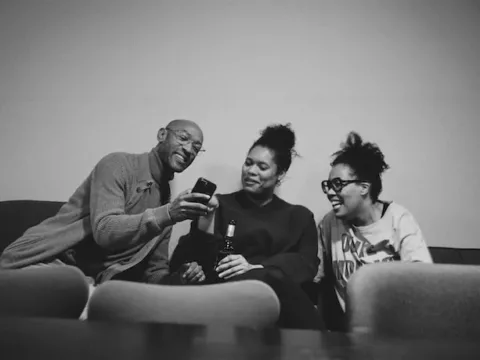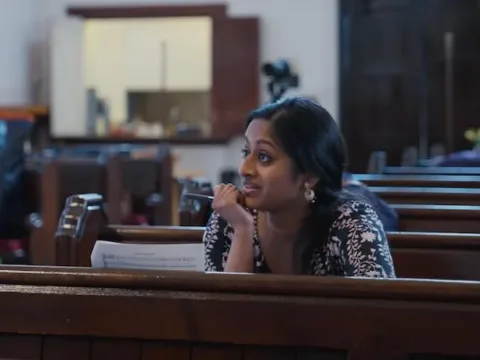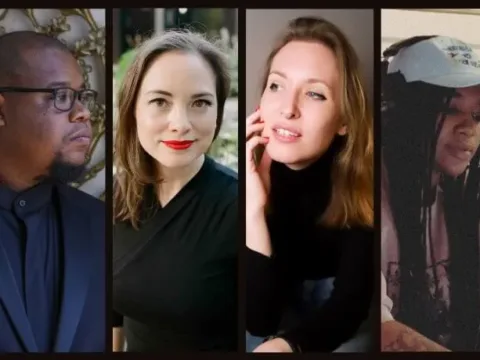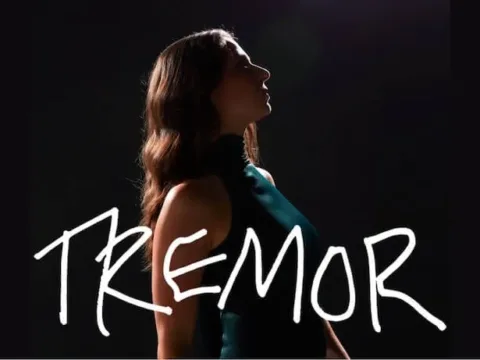In their Feb. 16 advice column on I CARE IF YOU LISTEN, Asking for a Friend responded to a message from a composer asking how to build a career when you are no longer “emerging”— a term that is frequently used in eligibility criteria for opportunities despite there being no consensus on what it actually means. I’m a composer who is somewhere in the gray area between “emerging” and whatever comes after, and I’ve been an adjudicator or faculty member for various opportunities designed for early-career composers. So I frequently grapple with the questions of who is considered “emerging” and what the target population is for a given opportunity. While Asking for a Friend briefly alluded to this issue, I believe it’s time for a deeper discussion on how the term “emerging” causes confusion, conflates age/student status with artistic development or professional experience, and rewards privileged artists who already have access to opportunities.
The “emerging” composer category is typically used as a more inclusive alternative to “student” or “young” composer by allowing applicants to self-identify. This sounds like a decent idea, but using such a vague and poorly-defined term also creates problems. Some composers who are within an opportunity’s target demographic might wrongly exclude themselves, while other overqualified composers might apply and take opportunities away from the intended population. Imposing this guesswork on composers feeds into existing inequities in the field, including gender parity, as men are much more likely than people of other gender identities to apply for opportunities when they do not meet all of the selection criteria. Since this phenomenon is believed to be caused by a lack of transparency in the selection process, rather than a lack of confidence on the part of the applicant, creating explicit eligibility criteria is paramount for generating a more diverse applicant pool.
The word “emerging” also implies there is some magical phase of a composer’s career where they are “established” and no longer need the same amount of support because their career presumably has enough momentum to sustain itself. The problem is that, for the majority of composers, no such phase exists — and without it, defining “emerging” is impossible.
Defining ’emerging’ in terms of age limits contributes to applicant pools remaining predominantly white, male, and affluent.
To figure out more useful eligibility criteria than “emerging,” we need to look at the thinking behind opportunities targeting such composers. Let’s begin by assuming that arts organizations are trying to be more inclusive and equitable, and creating opportunities for composers is part of that work. Let’s also assume that arts organizations are targeting young and student composers because they think these individuals need the most support.
On the surface, this seems reasonable enough — but age doesn’t always correlate with compositional development or experience. And people who start composing later and take a less traditional path are most often women, people of color, and people from lower socioeconomic statuses or geographic areas where access to arts education is limited. These individuals may well have aged out of young-composer competitions before they really even began pursuing such opportunities. Considering who this excludes, defining “emerging” in terms of age limits contributes to applicant pools remaining predominantly white, male, and affluent.
Student composer opportunities try to address this problem, but there’s a wide variety of experience levels among students. A teenage conservatory student who has taken Suzuki piano lessons since age 5 and studied with a private composition teacher since age 10 will likely produce work that is much more advanced than an older community college student who just started formal composition training. Based on their CV and portfolio, the conservatory student almost certainly looks like a better candidate for a student or “emerging” composer opportunity — not because they are more talented or have something more interesting to express in their art, but simply because their early access to arts education allowed them to start gaining valuable experiences at a younger age.

When it comes to artistic development and building a career, access supersedes age, student status, or number of years composing. Access to instruction, chances to engage with other musicians and composers, and most importantly, opportunities to hear one’s music played by live musicians and get high quality feedback play a major role in the artistic growth of a composer. They also generally lead to activities that build a composer’s resume and professional network. Such benefits are readily available in strong music programs, departments, or schools — and the students most likely to be admitted to such institutions are those with more advanced portfolios, built through their early access to music education and composition training.
Though we don’t acknowledge it as openly, such access also involves a certain degree of luck, beginning with being born to a family with financial stability or growing up in a geographic region where educational opportunities exist. Getting to participate in other career-defining experiences has a similar element of luck — your application is received in a year when the judges are receptive to your music, you happen to meet a performer at a concert and build a relationship with them, or someone hears your music performed and decides to commission you. But there are many talented composers who haven’t been so lucky in their access to formative experiences and professional networks — and our art form is missing out on their contributions.
In order to truly become more equitable and inclusive, arts organizations should seek out these individuals who haven’t had the same access to opportunities and explicitly define their eligibility criteria based on their target beneficiaries rather than using intentionally vague terms like “emerging.” There are many populations that would benefit from greater support: for example, historically-excluded genders and races, people from low-income backgrounds or areas where quality arts education is not available, students who aren’t attending the most prestigious colleges or conservatories, and composers who are no longer considered “young” or “early career.”
Once an organization has a clear idea of who they want to serve, the application and adjudication process can be tailored to maximize the potential for such composers to apply and be selected. This includes writing specific eligibility criteria based on your target population, designing submission requirements (i.e., application fees, recordings, recommendation letters, etc.) so people will not be disadvantaged due to lack of access, soliciting feedback from professionals within your target population to ensure that your intentions are coming across accurately, and strategizing ways to find individuals who would benefit from the opportunity.
A basic step would be publicizing opportunities through social media and established aggregators, particularly ones that are free to access such as Composer’s Site or American Composers Forum. Sharing your opportunity with more targeted organizations (for example, the International Alliance for Women in Music) or social media groups (i.e. the Black Classical Composers or Women and Gender Diverse People in Composition) will also help. But you may need to spend time contacting teachers/composers/performers who may know individuals in your target population, or doing some serious Google searching to compile a list of individuals you can directly invite to apply.
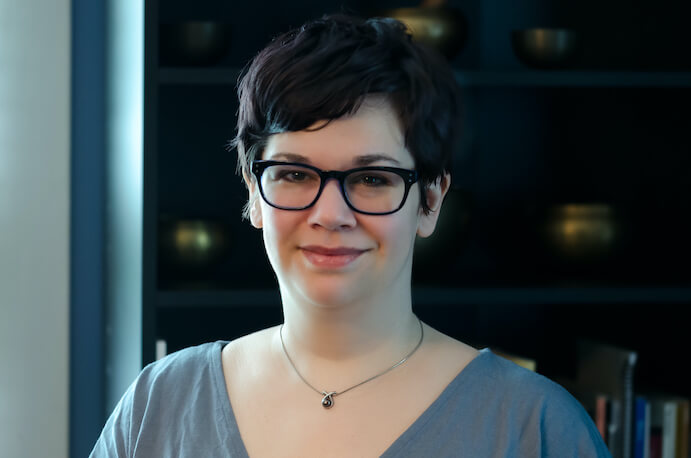
Receiving applications from the intended beneficiaries is not enough, though. The adjudication process must also be built to prioritize applicants who truly match the target population. Effective practices include enlisting and paying a diverse judging panel that rotates for repeated opportunities, requiring training on adjudicator bias, and providing clear evaluation criteria.
Selection for opportunities is typically based in large part (if not exclusively) on past successes, as demonstrated by scores and recordings, a CV/bio, and references or recommendation letters. Yet all of these are more indicative of a composer’s past access to opportunities than their talent or imagination. Since this perceived merit is more about access than worth, application processes that screen for potential rather than rewarding past achievements could be a way forward.
After going through the planning-application-selection-execution cycle, it’s equally important to evaluate how successful the process was in reaching and benefitting the desired population. Did you receive enough applicants from your target audience without being inundated by persons outside that population? If not, you can refine your eligibility criteria for future opportunities based on the applications received, improve efforts to make your target population aware of your opportunity, and eliminate potential barriers to participation in the opportunity itself. For example, removing an application fee is good, but if required travel expenses might make participation prohibitive for an applicant, they won’t apply.
If your target audience is applying but not getting selected, then the judging process should be adjusted. If the same individuals from your target population are getting selected year after year, consider whether past winners should be allowed to reapply without restriction: for example, imagine how many more composers might be highlighted if the ASCAP Morton Gould Young Composer Awards and the BMI Composer Awards did not allow winners to reapply.
Ultimately, organizations need to keep tweaking their application and selection processes until they are consistently reaching the population they want to support. Even then, they should continue assessing their success so they can adapt to future changes in the field and in the target group.

It’s also worth considering how to help composers who are part of your target population but aren’t selected for your opportunity. A bare minimum is to write thoughtful, personalized rejection letters — something that more organizations, thankfully, have started doing. Offering specific and concrete feedback to applicants is beneficial as well. Adding an encouraging note to individuals who were almost picked is a lovely gesture that composers will appreciate. But it is just a gesture.
More tangible ways to help promising applicants include recommending them for another opportunity, introducing them to someone you think would appreciate their music, or sharing their work on social media. If relevant, you can offer free tickets to events or free membership in your organization. You can also consider whether applicants who weren’t selected could audit some aspect of the winners’ activities. Chicago A Capella’s HerVoice Emerging Women Composer Competition is a great example of this: all composers who enter the competition are invited to participate in two Zoom sessions with that year’s mentors. This provides a tangible benefit to the applicants without putting any financial or logistical strain on the organizers, since they would simply be opening up an activity that is being held for the winners anyway. Steps like this can help improve access to training, mentorship, and professional networks for more members of your target population, giving them a better chance of successfully applying to opportunities from you or other organizations in the future.
But this all begins with reconsidering our use of the term “emerging” and replacing it with clear and focused eligibility criteria that target individuals who do not currently have a strong support system. Thoughtfully engaging with the questions of who you want to help — as well as how and why you want to help them — can allow arts organizations to support more diverse populations in more impactful ways, and allow more voices a chance to be heard.
I CARE IF YOU LISTEN is an editorially-independent program of the American Composers Forum, and is made possible thanks to generous donor and institutional support. Opinions expressed are solely those of the author and may not represent the views of ICIYL or ACF.
You can support the work of ICIYL with a tax-deductible gift to ACF. For more on ACF, visit the “At ACF” section or composersforum.org.
